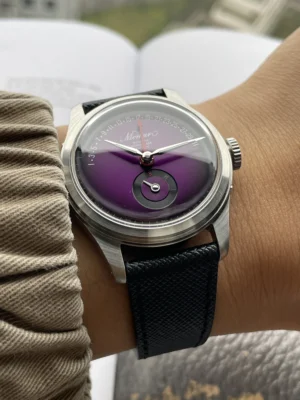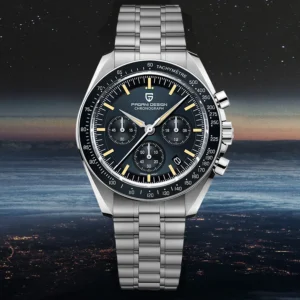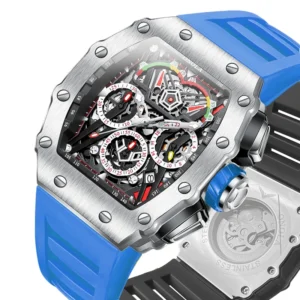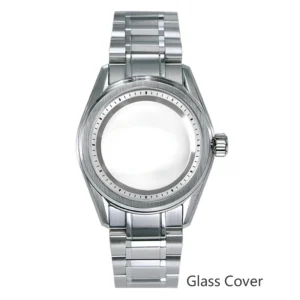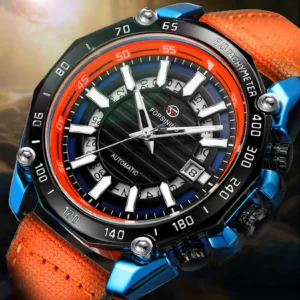Introduction: The Magic of Moonphase Watches
A moonphase watch is a remarkable timepiece that features a specialized complication displaying the current phase of the moon as it appears in the sky. Unlike ordinary watches that merely tell time, these horological marvels track the 29.5-day lunar cycle through an intricate mechanical system hidden beneath their elegant dials.
The allure of moonphase automatic watches extends far beyond their practical function. They represent a perfect blend of art, astronomy, and mechanical precision that continues to fascinate watch enthusiasts worldwide. There’s something deeply satisfying about glancing at your wrist and seeing not just the time, but also a miniature representation of the same moon that humans have been gazing at for millennia.
Throughout this article, we’ll explore the ingenious mechanisms behind moonphase watches, examine their various display types, and understand why this ancient complication remains one of horology’s most cherished features. We’ll also delve into the precision challenges watchmakers face when attempting to mechanically replicate a celestial phenomenon.
The Heart of the Matter: Understanding the Moonphase Mechanism
At the core of every moonphase watch lies a brilliant mechanical solution to an astronomical challenge. The standard how moonphase complications work involves several key components working in harmony.
The most critical element is a disc with two identical moon representations painted or applied onto it. This disc rotates behind an aperture (window) on the watch dial, displaying the current phase of the moon. The aperture is typically shaped like a crescent or “bosom,” allowing only the relevant portion of the moon to be visible at any given time.
Powering this rotating disc is the crucial 59-tooth driving wheel. This specific number of teeth is no accident—it’s a clever mathematical approximation of the lunar cycle. Since the moon takes approximately 29.5 days to complete its cycle, the 59-tooth wheel (controlling two complete moon cycles) advances by one tooth each day, creating a mechanical approximation of the moon’s movements.
Here’s how it works in practice: Every 24 hours, a small mechanical “finger” or lever pushes the 59-tooth wheel forward by one notch. This incremental movement gradually rotates the moonphase disc, revealing different portions of the moon through the dial aperture. As the disc turns, the visible portion of the painted moon grows larger (waxing) or smaller (waning), mirroring the real lunar phases visible in the night sky.
The reason for having two identical moons on the disc is clever engineering. While one moon is visible through the aperture, the other is hidden behind the dial. When the visible moon completes its cycle, the second moon begins to appear, maintaining a continuous display of lunar phases.
The Lunar Cycle: Foundation of Moonphase Displays
To truly appreciate the moonphase complication accuracy explained, we must first understand what these watches aim to replicate. A complete lunar cycle, known as a synodic month, spans approximately 29.53 days—the time it takes for the moon to go from one new moon to the next.
During this period, the moon passes through eight distinct phases:
- New Moon – The moon is positioned between Earth and the sun, with its dark side facing us
- Waxing Crescent – A sliver of the right side becomes visible
- First Quarter – The right half of the moon is visible
- Waxing Gibbous – More than half but less than full moon is visible
- Full Moon – The entire face of the moon is illuminated
- Waning Gibbous – The visible portion begins to decrease from the right
- Last Quarter – The left half of the moon is visible
- Waning Crescent – Only a sliver remains visible before returning to new moon
A moonphase watch’s mechanism aims to replicate this gradual progression through mechanical means. The rotating disc with two moon images makes a complete revolution approximately every 59 days (representing two lunar cycles), with the aperture on the dial framing the correct portion of the moon image for each day.
Understanding this natural cycle helps us appreciate the inherent challenge watchmakers face: how to translate a natural phenomenon that lasts precisely 29.53 days into a mechanical system that operates with gears, which by definition must have whole numbers of teeth.
Precision in Focus: Accuracy and Adjustments
The marriage between celestial rhythms and mechanical watchmaking creates fascinating precision challenges. The standard moonphase mechanism with its 59-tooth wheel creates a mechanical lunar cycle of exactly 29.5 days (59 ÷ 2). However, the actual lunar cycle is 29.53 days, resulting in a slight discrepancy.
This small difference—approximately 0.03 days per cycle—accumulates over time. A standard moonphase watch gains about one day of error approximately every 31.5 months (roughly 2 years, 7 months, and 20 days). At this point, the displayed moon phase will be one full day ahead of the actual moon in the sky, requiring manual adjustment.
For many watch enthusiasts, this occasional adjustment is part of the charm of owning a mechanical moonphase watch. However, some perpetual calendar automatic watches incorporate significantly more precise moonphase mechanisms.

The most impressive high-precision moonphase mechanisms utilize a 135-tooth wheel, creating an astonishingly accurate approximation of the lunar cycle. With this system, the watch accumulates an error of just one day in 122 years! Other ultra-precise mechanisms achieve even greater accuracy through additional gearing complexity.
These high-precision mechanisms represent the pinnacle of watchmaking ingenuity, demonstrating how mechanical systems can achieve remarkable astronomical accuracy despite their inherent limitations. The pursuit of lunar precision has driven watchmakers to develop increasingly sophisticated solutions, all contained within the confined space of a wristwatch.
Diversity on the Dial: Types of Moonphase Displays
While the underlying mechanism may be similar across most moonphase watches, the visual presentation can vary significantly, creating diverse aesthetic experiences. The traditional and most common representation is the “bosom” moonphase display, featuring a crescent-shaped aperture that frames the appropriate portion of the moon disc.
This classic design evokes the romantic imagery of the moon peeking through clouds, offering a poetic interpretation of lunar phases. The curved aperture creates a natural framing effect that has become the iconic representation of moonphase complications.
In contrast, radial moonphase displays utilize a different approach. Instead of the rotating disc with moon images, these designs feature a hand or pointer that indicates the current moon phase along a semicircular scale. The underlying mechanical principles remain similar, but the visual presentation creates a more technical, instrumentation-like aesthetic.
Modern unique automatic watches have introduced even more creative interpretations. Some feature photorealistic moon representations with incredible detail, capturing the actual texture and appearance of the lunar surface. Others incorporate colored backdrops that transition from blue to black, representing the night sky.
Some luxury watchmakers take artistic license, creating stylized celestial scenes with stars, clouds, or mythological elements accompanying the moon display. These artistic interpretations transform the moonphase from a mere complication into a canvas for horological artistry.
A Journey Through Time: History of the Moonphase Complication
The human fascination with tracking lunar cycles extends far beyond wristwatches. The earliest known lunar tracking mechanism dates back to ancient Greece with the Antikythera Mechanism (circa 100 BCE), which could predict lunar positions with remarkable accuracy.
Throughout the Middle Ages, astronomical clocks in European cathedrals and town squares featured elaborate lunar displays alongside other celestial indicators. These public timepieces served both practical and symbolic purposes, connecting timekeeping with cosmic rhythms.
The miniaturization of lunar tracking mechanisms began with pocket watches during the 18th century, when watchmakers started incorporating moonphase displays into portable timepieces. These early examples were primarily created for wealthy patrons who valued both the utility and prestige of carrying astronomical information in their pockets.
The history of dive watch engineering parallels many developments in moonphase complications, as both required solving significant technical challenges to create practical, reliable timepieces. Like dive watches, moonphase watches evolved from specialized tools to symbols of craftsmanship and prestige.
The transition to wristwatches in the early 20th century brought new challenges in miniaturization, but by the 1920s and 1930s, several manufacturers had successfully incorporated moonphase complications into wristwatches. During this period, the moonphase display began its transformation from practical tool to aesthetic feature, though it still maintained functionality for those who relied on lunar information for agricultural, navigational, or traditional purposes.
Beyond Functionality: The Allure of Moonphase Watches
What makes moonphase watches so captivating in today’s digital world? The answer lies in their unique combination of technical mastery, aesthetic beauty, and connection to something greater than ourselves.
The ultimate guide to moonphase watches often highlights their remarkable craftsmanship. Creating a functioning miniature astronomical display requires exceptional skill, especially considering that these mechanisms operate continuously for years without adjustment. The level of precision engineering required to fit such a complex system into a wristwatch is nothing short of extraordinary.
Aesthetically, few watch complications match the visual poetry of a well-executed moonphase display. The golden moon against a starry blue background creates an evocative miniature tableau that transcends simple time-telling. Many enthusiasts find themselves checking their moonphase watches not just to verify the time but also to appreciate the artistic moonscape on their wrists.
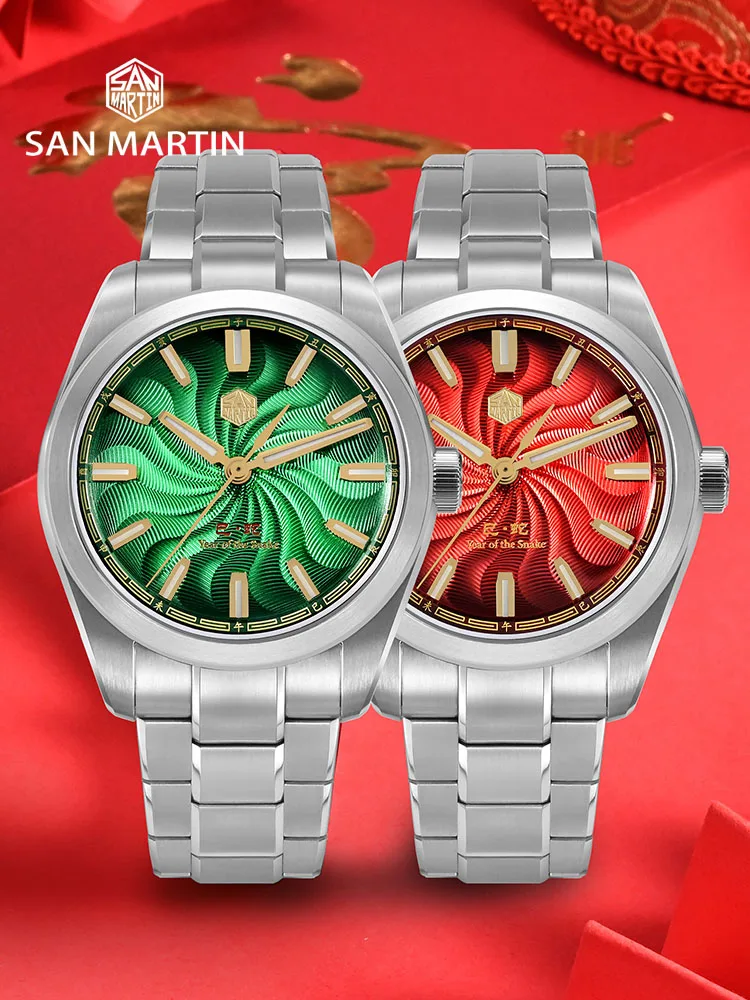
Perhaps most importantly, moonphase watches maintain our connection to natural rhythms in an increasingly digital, disconnected world. While smartphones can instantly display lunar information, there’s something profoundly satisfying about wearing a mechanical device that physically tracks the same celestial body that has guided human timekeeping for millennia.
For collectors, moonphase watches represent a perfect intersection of technical complexity, artistic expression, and horological tradition. Their relative rarity compared to standard timepieces also makes them particularly desirable pieces that often appreciate in value over time.
Classic Automatic Dress Watches, Day Date Automatic Watches, Perpetual Calendar Automatic Watches
Price range: $540.60 through $574.60 Select options This product has multiple variants. The options may be chosen on the product pageAutomatic Skeleton Watches, Open Heart Automatic Watches
$98.36 Select options This product has multiple variants. The options may be chosen on the product page- $480.96 Select options This product has multiple variants. The options may be chosen on the product page
Rugged Automatic Watches, Unique Automatic Watches
Price range: $228.96 through $231.10 Select options This product has multiple variants. The options may be chosen on the product pageGMT Automatic Watches, Unique Automatic Watches
$420.10 Select options This product has multiple variants. The options may be chosen on the product pageAutomatic Skeleton Watches, Military Inspired Automatic Watches, Unique Automatic Watches
$191.88 Select options This product has multiple variants. The options may be chosen on the product page
Practical Guide: Setting a Moonphase Watch
Setting a moonphase watch correctly requires understanding both your specific timepiece and the current actual moon phase. Here’s a general approach that works for most moonphase watches:
First, determine the current moon phase using a reliable source such as a weather app, astronomical website, or almanac. You’ll need to know whether it’s a new moon, full moon, or somewhere in between.
Most moonphase watches are adjusted through the crown or through small corrector buttons (pushers) recessed into the side of the case. These correctors typically require a small tool or stylus that comes with the watch. For crown-operated moonphase adjustments, this usually involves pulling the crown to a specific position.
The general setting procedure:
- Identify when the last full moon occurred
- Set the watch to display full moon
- Advance the moonphase mechanism day by day to match the current phase
Important precautions: Avoid adjusting the moonphase between 9 PM and 3 AM when the date change mechanism may be engaged, as this could damage the gears. If you’re unsure about the procedure for your specific watch, consulting the manual is always wise.
Regular maintenance is essential for ensuring the longevity of your moonphase watch. Like other complex mechanical timepieces, how long automatic watches last depends significantly on proper care and periodic professional servicing. A well-maintained moonphase watch can continue functioning accurately for generations, requiring only occasional adjustments to remain in sync with the actual lunar cycle.
Frequently Asked Questions About Moonphase Watches
How accurate is a typical moonphase watch?
A standard moonphase watch with a 59-tooth wheel mechanism will be accurate to about one day every 2.5 years. High-precision versions with 135-tooth wheels maintain accuracy for 122 years before requiring a one-day adjustment.
Do I need to adjust my moonphase watch often?
For standard moonphase mechanisms, an adjustment every 2-3 years keeps the display reasonably accurate. Many owners adjust their watches during routine maintenance or when changing from daylight saving time.
What’s the difference between a moonphase display and a day/night indicator?
A true moonphase display tracks the complete 29.5-day lunar cycle showing all phases. A day/night indicator simply rotates once every 24 hours, showing a sun during daylight hours and moon at night, without tracking actual lunar phases.
Why are moonphase watches often more expensive?
The additional complexity of the moonphase mechanism requires more parts, more assembly time, and more testing. This complication also typically appears in watches that feature higher-quality finishing and materials overall.
Can moonphase watches track lunar cycles in both hemispheres?
Standard moonphase watches display the same moon phases visible worldwide. While the moon appears “flipped” between northern and southern hemispheres, its phase progression remains identical globally. Some specialized astronomical watches may display hemisphere-specific views.
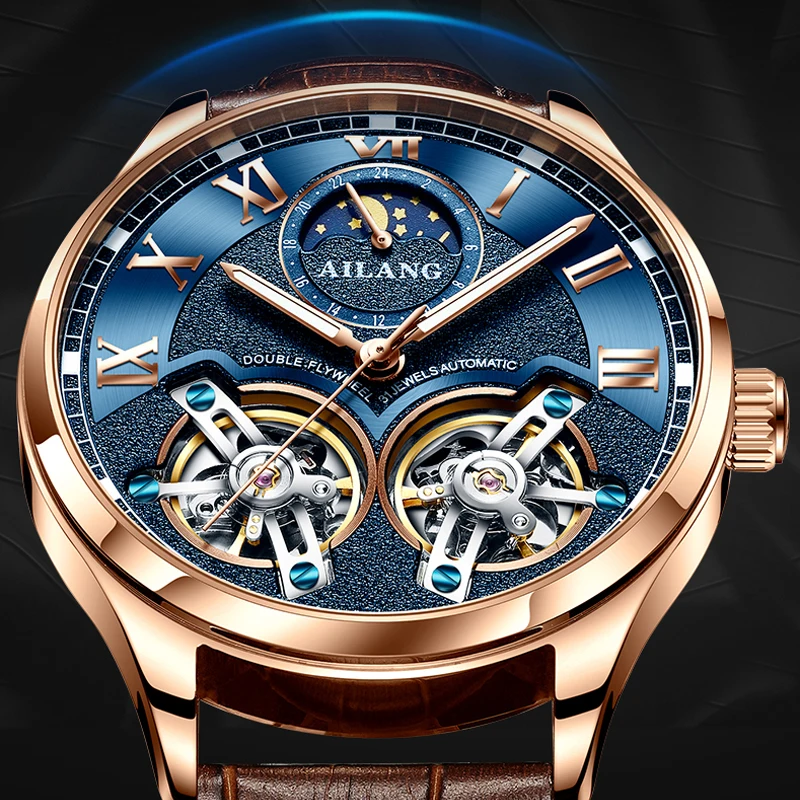
Are moonphase watches worth the investment?
For enthusiasts who appreciate mechanical ingenuity, traditional craftsmanship, and the connection to astronomical timekeeping, open heart automatic watches with moonphase complications offer tremendous value beyond mere timekeeping. They often retain value well and provide distinctive character in any watch collection.
Conclusion: The Timeless Elegance of Lunar Timekeeping
Moonphase watches represent a perfect marriage of science and art, precision and poetry. Their mechanisms—whether simple or elaborate—continue a horological tradition that connects us to both watchmaking heritage and the natural rhythms that have guided human timekeeping for thousands of years.
The evolution of dive watch technology shows how mechanical innovation continues even in the digital age. Similarly, moonphase watches demonstrate that even ancient complications remain relevant, continuing to evolve while preserving their essential character.
As we’ve explored, these remarkable timepieces track lunar cycles through ingenious mechanical approximations, balancing precision engineering with artistic expression. Whether appreciated for their technical complexity, aesthetic beauty, or symbolic connection to the cosmos, moonphase watches continue to captivate watch enthusiasts and represent one of horology’s most enduring and enchanting complications.


